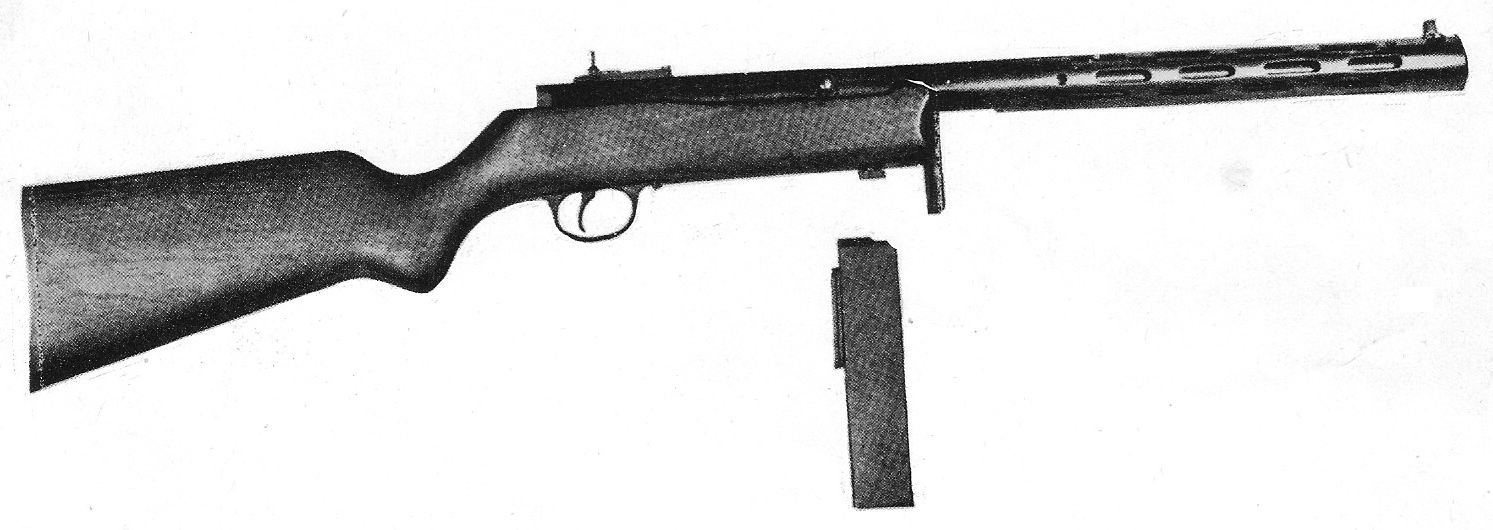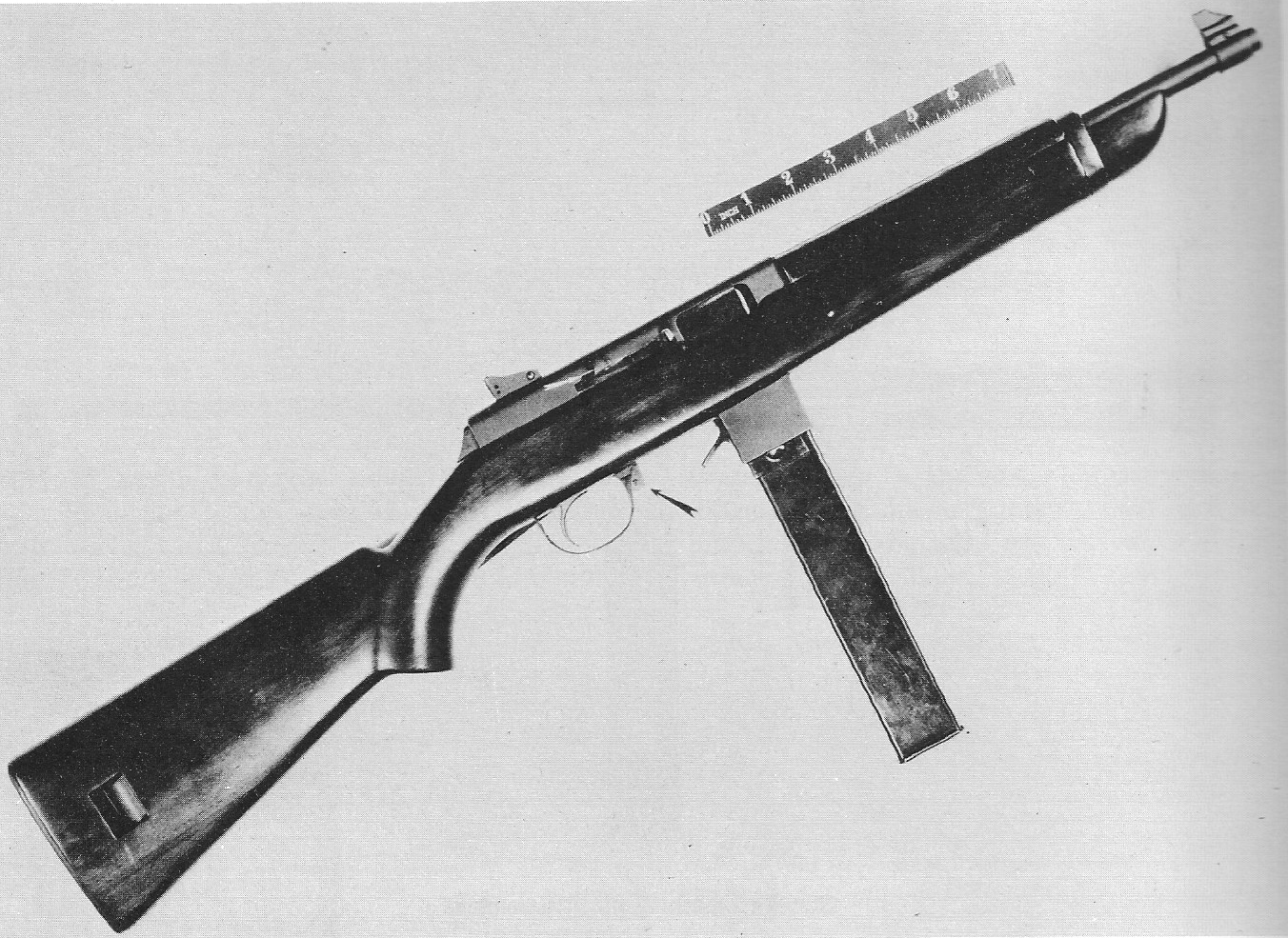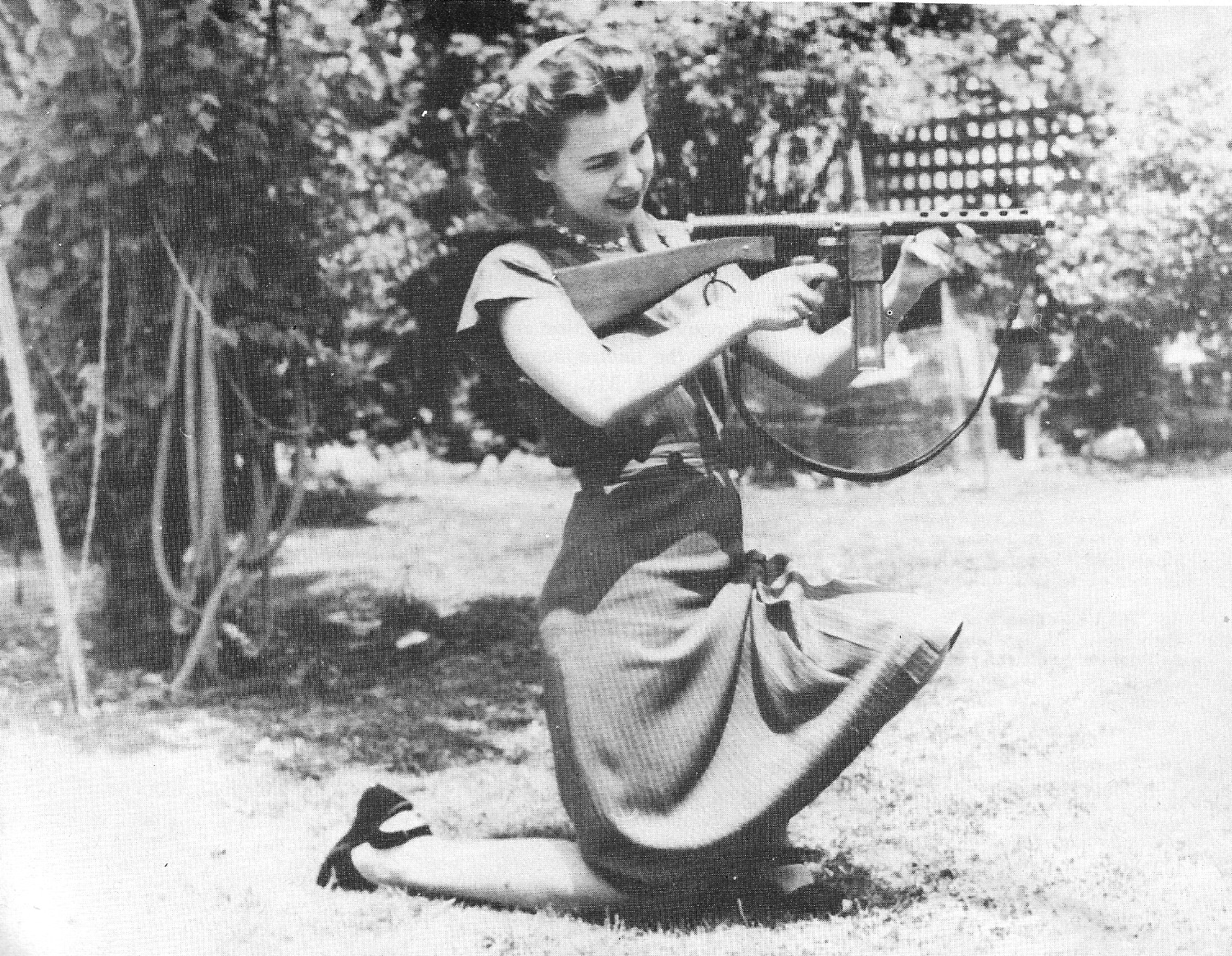The Sedgley submachine guns

Reginald F. Sedgley of Philadelphia, Pennslyvania developed a basic 9mm blowback submachine gun in 1940. The basic design of this gun was somewhat similar to the German M.P.18,I but fed from a vertical 20-round magazine and featured a fire selector switch on the left side of the receiver. There was also an interesting system of locking the bolt which was activated by pushing the cocking handle inward, penetrating through the side of the bolt and jamming it in place (only whilst the bolt was in the rear position). The Sedgley gun was proposed to the British Purchasing Commission, who declined it on the basis that they did not have confidence in the R.F. Sedgley Company to produce these guns in the numbers required. Instead the British purchased Thompson guns from Auto-Ordnance.
Later in the war, Sedgley developed a new “takedown” SMG that was derived from his earlier prototype. The Sedgley takedown gun was designed as a collapsible weapon for paratroopers, possibly commissioned for the OSS. This gun followed the same basic design as the previous SMG but was built to come apart into three sections: the barrel, receiver, and stock. All three parts were connected together by threaded screws. The barrel had no jacket and featured a five-slot muzzle compensator, and the cocking slot was moved to the top of the receiver. Spent cases were ejected directly upward. The Sedgley takedown SMG never got past the experimental stage.

The Sedgley takedown SMG, .45 ACP

The Sedgley takedown gun, collapsed
The Turner and Woodhull submachine guns

The Turner .45 SMG (top) and Woodhull .45 SMG (bottom)
These two submachine guns, designed by Russel J. Turner and Frederick W. Woodhull respectively, were originally built in 1941 as .30-cal carbines for entry into the US Army’s SRM-1 carbine trials. When they were both rejected in favor of the M1 Carbine, the designs were redeveloped into .45 submachine guns and resubmitted for testing in 1942. The Turner SMG was a rudimentary gas-operated weapon with no furniture and a distinctive jacketed barrel. It had a selective-fire system in the form of a Allen screw connected to the trigger sear that gave single-shots or full-auto fire depending on the tightness of the screw. The Woodhull SMG was a better-finished weapon that was built from a converted Winchester 1905 rifle, originally in .32 caliber. The internal operation was basically the same as the Winchester .32 rifle but the bolt was strengthened to facilitate for the powerful .45 cartridge. A particularly large wooden fore-end was also fitted by Woodhull. Both of these guns took 10 or 20-round magazines but neither were considered acceptable for service.
The Smith & Wesson machine carbine

In 1945 Smith & Wesson produced a new prototype 9mm carbine that was built in two versions: a selective-fire model with a folding stock and a semi-automatic model with a wooden stock. These guns were not blowback but were in fact gas-operated. That they were sent to Britain for testing, as well as the fact that they fed from Sten magazines, would imply that they were possibly intended for British military use. It is possible that this weapon was an attempt by Smith & Wesson to win back the favor of the Royal Navy, who had bought 2,000 S&W-made 9mm carbines in 1940 but were very disappointed with them and prematurely retracted them from service. In any case, the war came to a close before development of this new carbine was completed and only a few prototypes were made.
The Ingram Model 5

This was Gordon Ingram’s first design, hand-built by him shortly after he returned to the United States following World War II. Ingram designed the Model 5 as an ultra-simple and cost-efficient blowback SMG firing from an open bolt, taking 12 and 25-round Reising magazines. He named it as the “Model 5” because he believed the US Army might adopt an M4 submachine gun and wanted to avoid confusion with that (the Army, in fact, never did adopt an M4 SMG). The design was picked up and marketed by the Lightning Arms Company in 1946 and was demonstrated in Nicaragua before the country’s dictator Anatosio Somoza DeBayle and the First Lady, Hope Portocarrero (very probably the woman in the photograph). Despite this, nothing came of it and no orders for the gun were placed. Only a single prototype - no longer extant - was built and the design was abandoned in 1948 when Ingram began work on the more successful Model 6 submachine gun.